Abstract
The association of body temperature with demographic, maturational, constitutional, and cardiovascular risk variables was investigated in a large, representative sample of US children and adolescents in the Health Examination Survey. While body temperatures in children ages 6 to 11 years were not related to demographic variables, temperatures in children ages 12 to 17 were lower at older ages, higher in females than males, and higher in whites than blacks. In multiple regression analyses, demographic variables, maturational variables, and variables related to heat production or loss explained less than 10% of the variation in body temperature. Body temperature was a significant independent correlate of resting heart rate and systolic blood pressure at ages 6 to 11 and 12 to 17. Body temperature showed weak tracking over a follow-up interval averaging 44 months.
Full text
PDF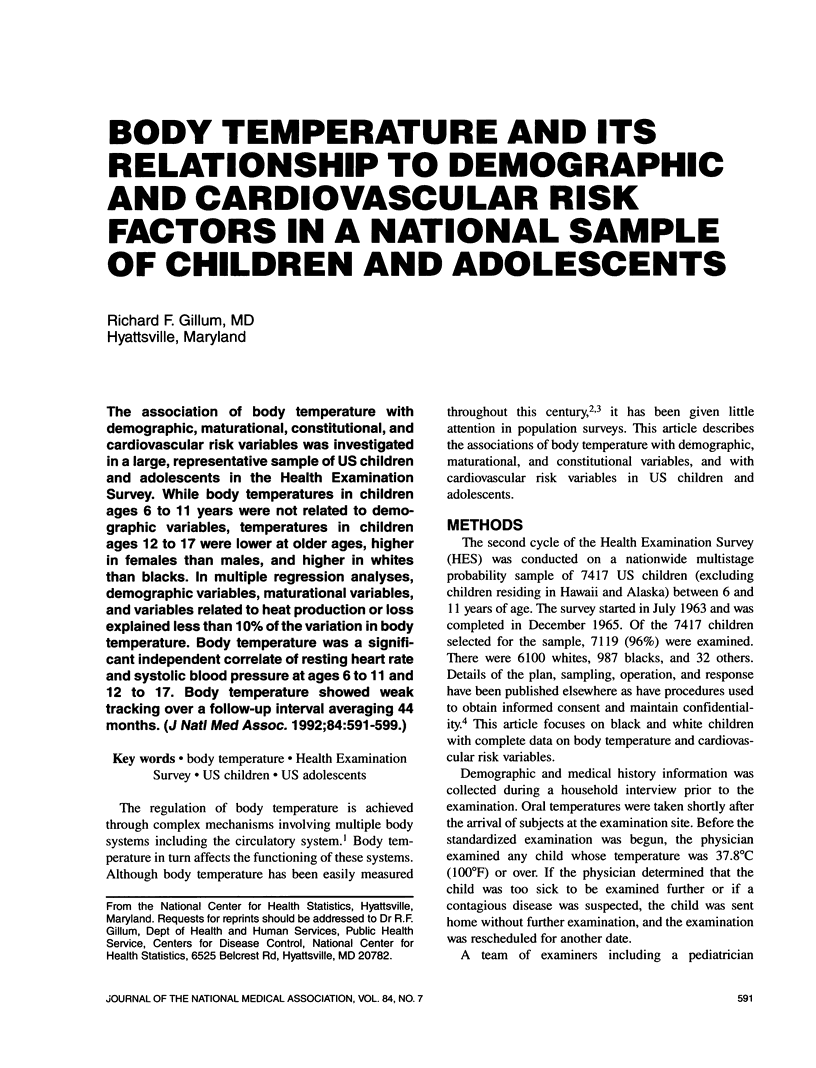

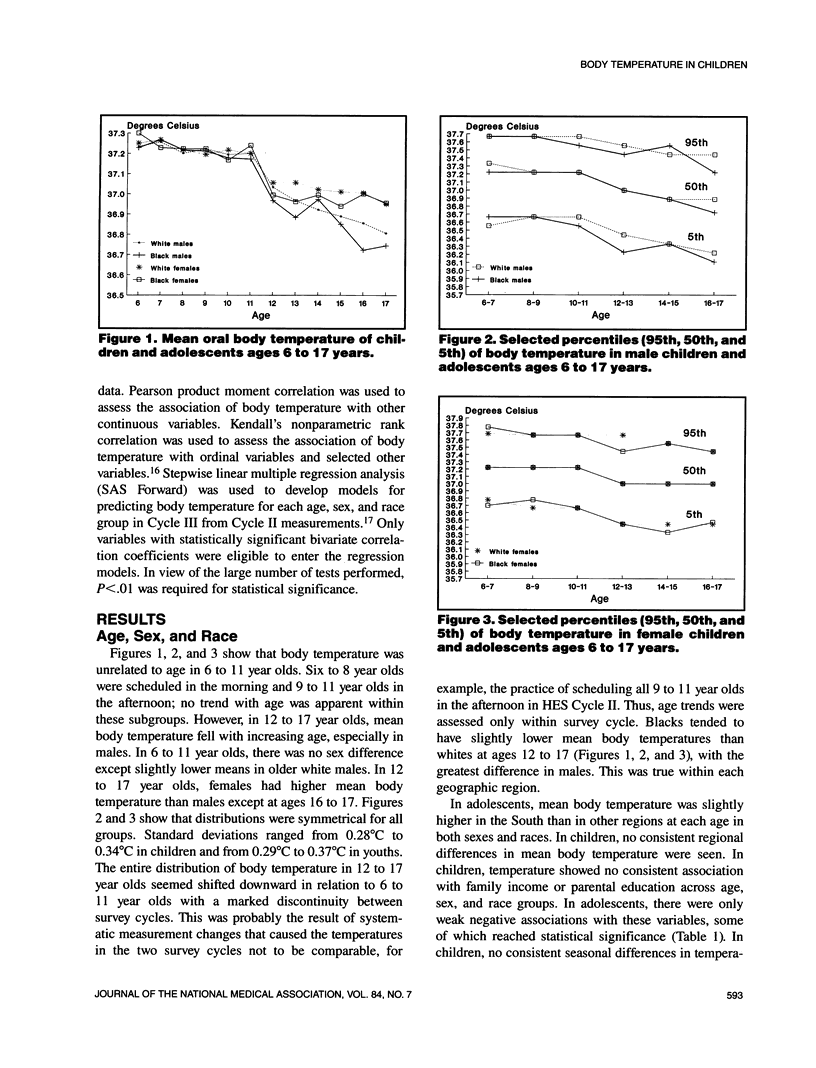

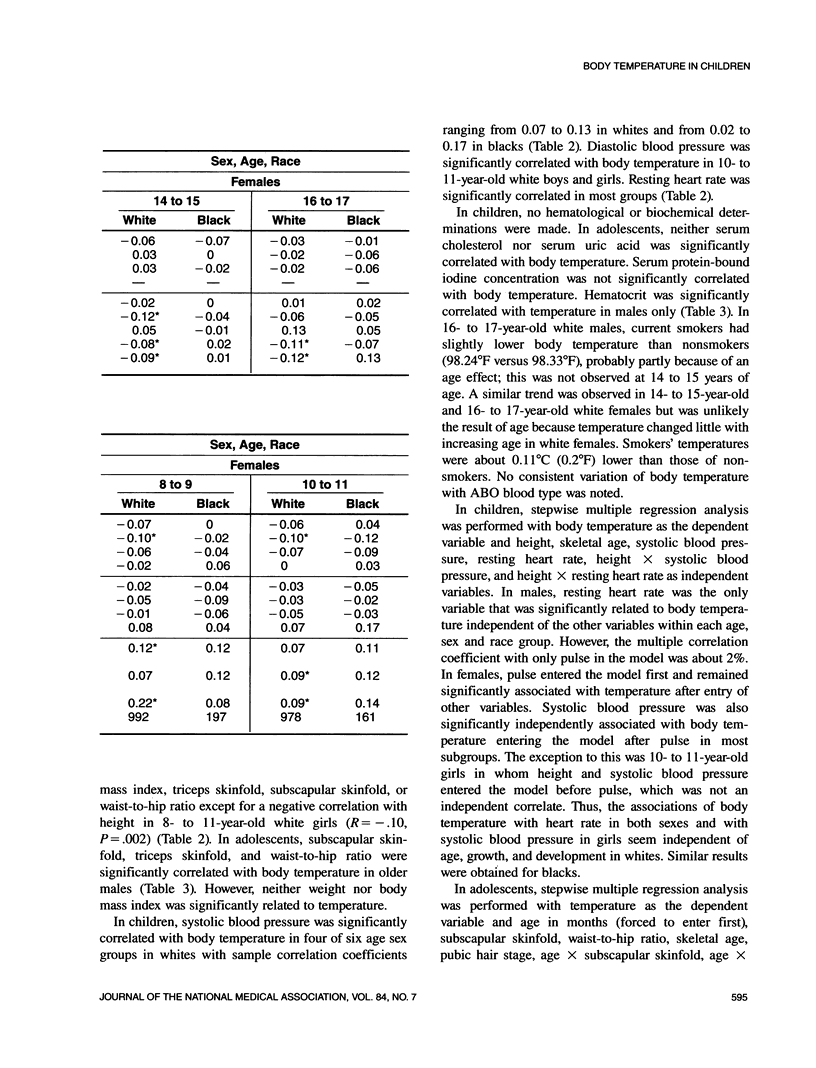
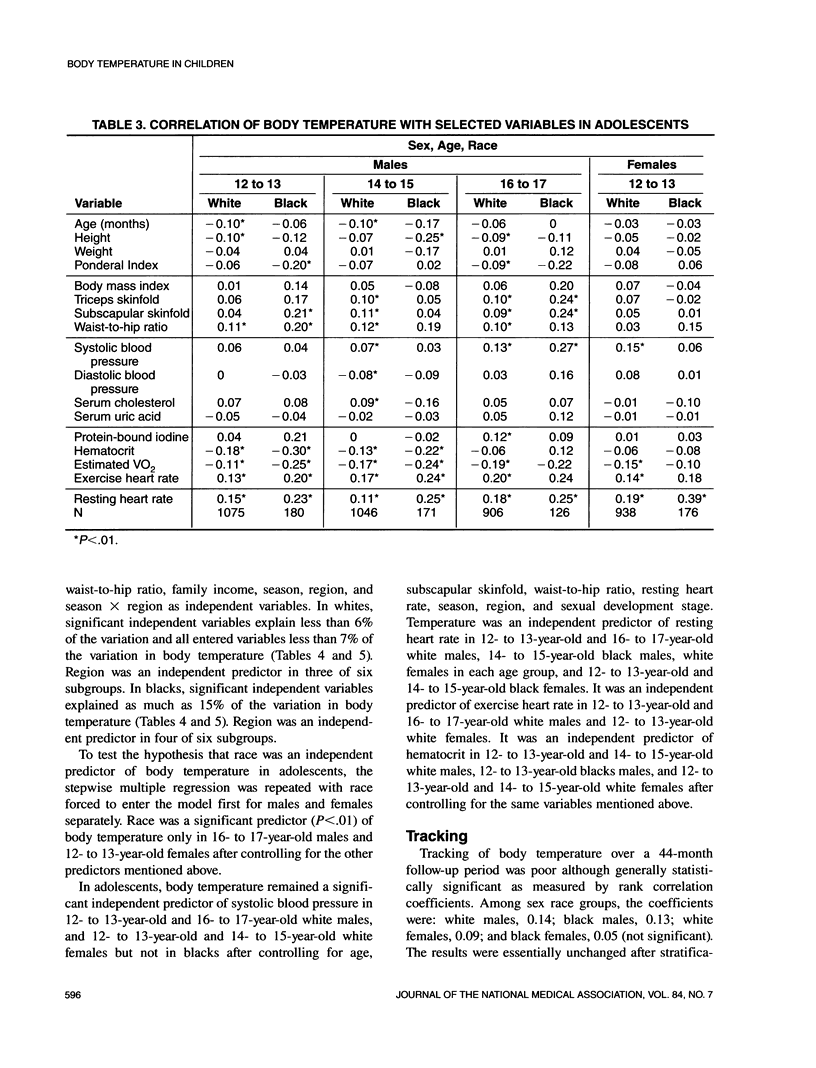
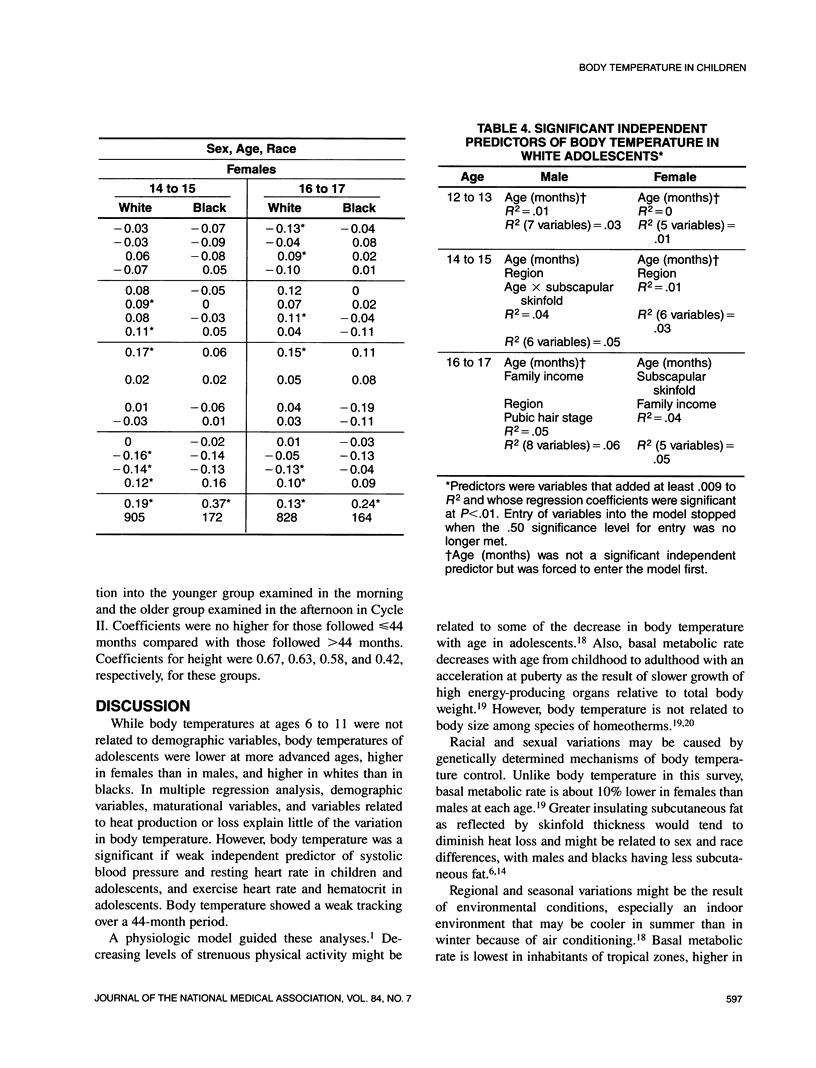
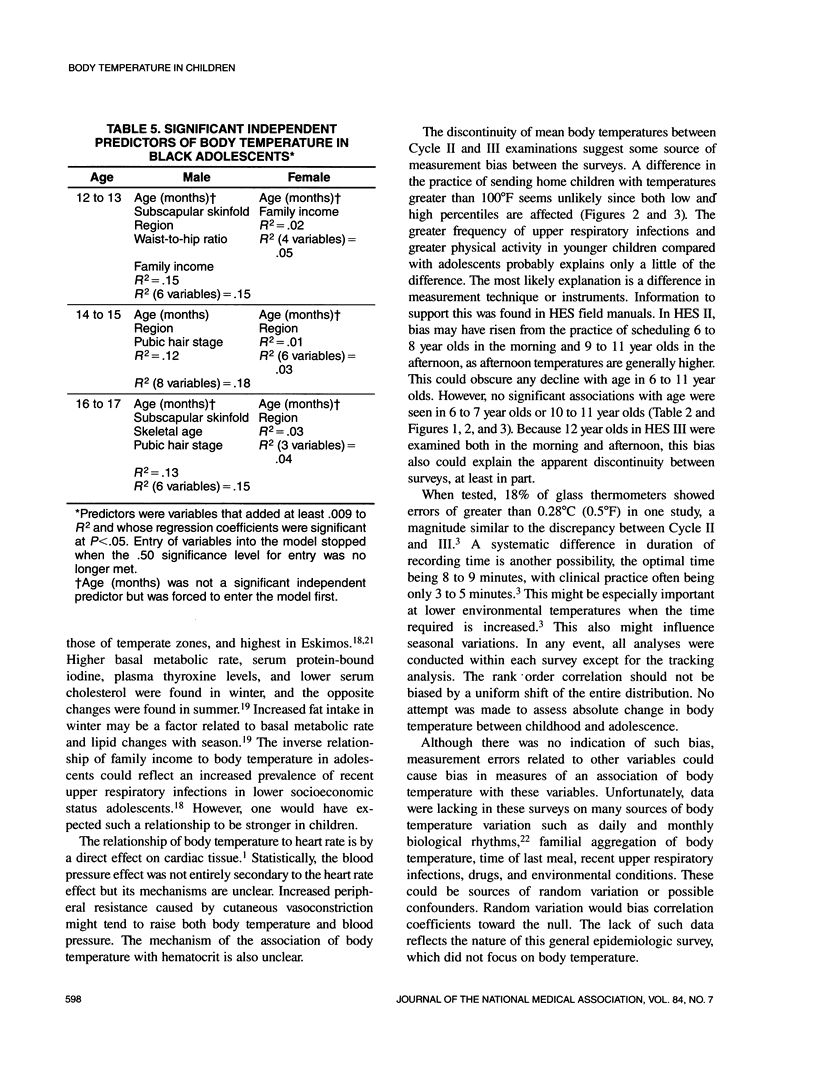
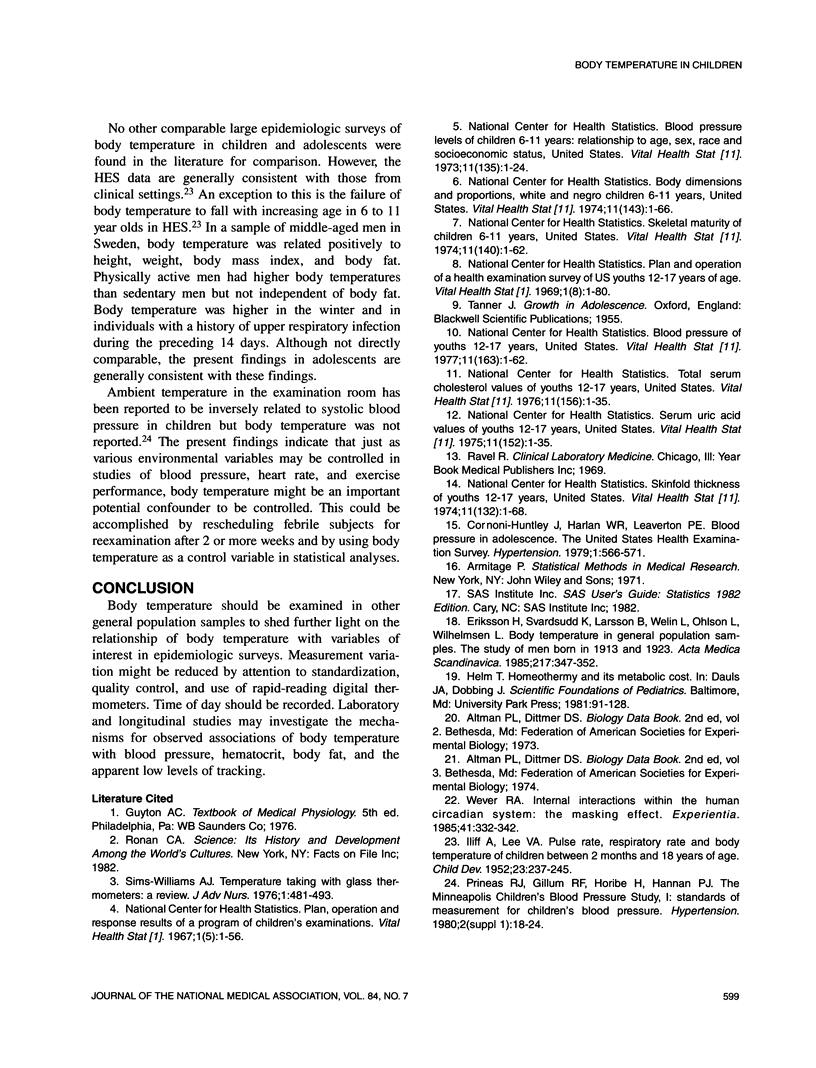
Selected References
These references are in PubMed. This may not be the complete list of references from this article.
- Cornoni-Huntley J., Harlan W. R., Leaverton P. E. Blood pressure in adolescence. The United States Health Examination survey. Hypertension. 1979 Nov-Dec;1(6):566–571. doi: 10.1161/01.hyp.1.6.566. [DOI] [PubMed] [Google Scholar]
- Eriksson H., Svärdsudd K., Larsson B., Welin L., Ohlson L. O., Wilhelmsen L. Body temperature in general population samples. The study of men born in 1913 and 1923. Acta Med Scand. 1985;217(4):347–352. [PubMed] [Google Scholar]
- ILIFF A., LEE V. A. Pulse rate, respiratory rate, and body temperature of children between two months and eighteen years of age. Child Dev. 1952 Dec;23(4):237–245. [PubMed] [Google Scholar]
- Sims-Williams A. J. Temperature taking with glass thermometers: a review. J Adv Nurs. 1976 Nov;1(6):481–493. doi: 10.1111/j.1365-2648.1976.tb00934.x. [DOI] [PubMed] [Google Scholar]


